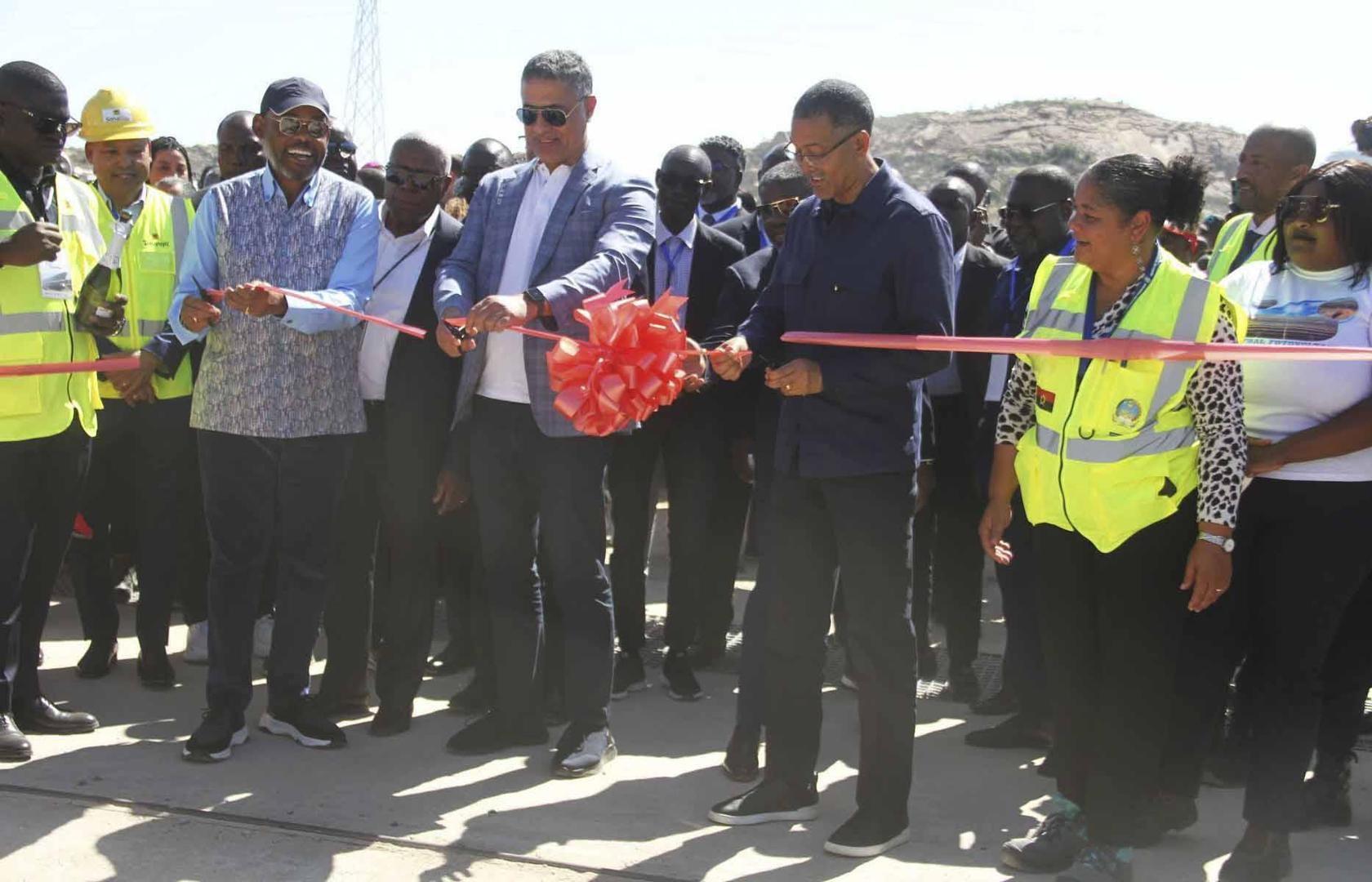Africa-Press – Angola. The inauguration Tuesday, of the Photovoltaic Center of Caraculo, in Namibe province, “represents an important milestone” in the policy of diversifying the region’s energy matrix, said the minister of Mineral Resources, Oil and Gas, Diamantino de Azevedo.
Even admitting that some regions of Namibe still depend on thermal sources for electricity production, the minister, at the plant’s inaugural ceremony said that this act also marks “an important step” for Sonangol, towards its transformation into the segment of energy, thus conforming its entrepreneurial action to the current practices of the world industry.
He underlined that the plant is an investment between Sonangol and Azully Energy and represents a more efficient way of using the available natural resources, for the production of clean energy, with lower costs for the State.
This marriage between technology and the sun, according to the minister, now leads to a “fair transition”, eliminating energy poverty and guaranteeing its access to the most disadvantaged populations, as well as allowing the development of a local industrial sector for the improvement of the living conditions of this population.
“The national oil sector, through Sonangol, with the support of Azully Energy, embraced, putting an end to a sectoral strategy of the Executive, which aims to develop an important park of renewable energy, so that in 2025, the mark of 70 percent of clean energy in the national matrix”, he said.
New actions for the sector
For Namibe province, as informed by the minister, the sector he directs is focused on mining activities, as well as determining the potential of hydrocarbons in its basin and building a center for the development of ornamental rocks and a steel industry.
“These activities should be used using environmentally friendly technologies and equipment in order to preserve the region’s ecosystem. The success of these activities will contribute to the creation of jobs and encourage small business initiatives and will contribute to the growth and development of the province”, he stressed.
He also guaranteed that Sonangol will not only focus on this project, as within the scope of its transformation into an energy company, it is already implementing and studying others, not only in photovoltaic energy, but also wind energy, biofuels and critical minerals, for a just energy transition.
At this ceremony, the Minister of Energy and Water, João Baptista Borges, said that this project marks the first partnership in the public and private sector in renewable energies, with his portfolio participating directly in the exploration phase.
This public or private partnership, according to the minister, marks the first commitment that the public sector has with the private sector, insofar as the production resulting from the plant will be injected into the distribution network and from there to consumers’ homes.
He stressed that this project marks not only what has to do with the use of new renewable energy sources, with the production of electricity, but the production of cheaper electricity with an endogenous energy source, abundant and regular throughout the year.
With the production of this type of energy, the minister stated that from now on there will be savings in the order of 18 million years, “significant and it means that we are moving well towards providing energy to the population more cheaply”.
Country electrification strategy
In this regard, the minister stressed that it is the country’s electrification strategy that is intended and the Caraculo power station, with the second phase, and other actions to be carried out in Lubango, will serve the southern region, since the electricity grid is still in operation. isolated, as there is no connection between Huambo and Lubango.
The governor of Namibe, Archer Mangueira, appealed to the companies executing the project for social responsibility, such as the guarantee of energy in this area of Caraculo, the completion of water holes and the school for primary education.
The investment was estimated at US$42 million and will have a useful life of 25 years and was carried out in an area of 33 hectares, starting in April 2022, building the construction at the photovoltaic plant where 46,000 biphaseal panels were installed.
The forecast is to produce around 49 watts of energy, with a 15/60 kilowatt substation connected to the 60 kilowatt line and the roads that interconnect the project.
For More News And Analysis About Angola Follow Africa-Press






